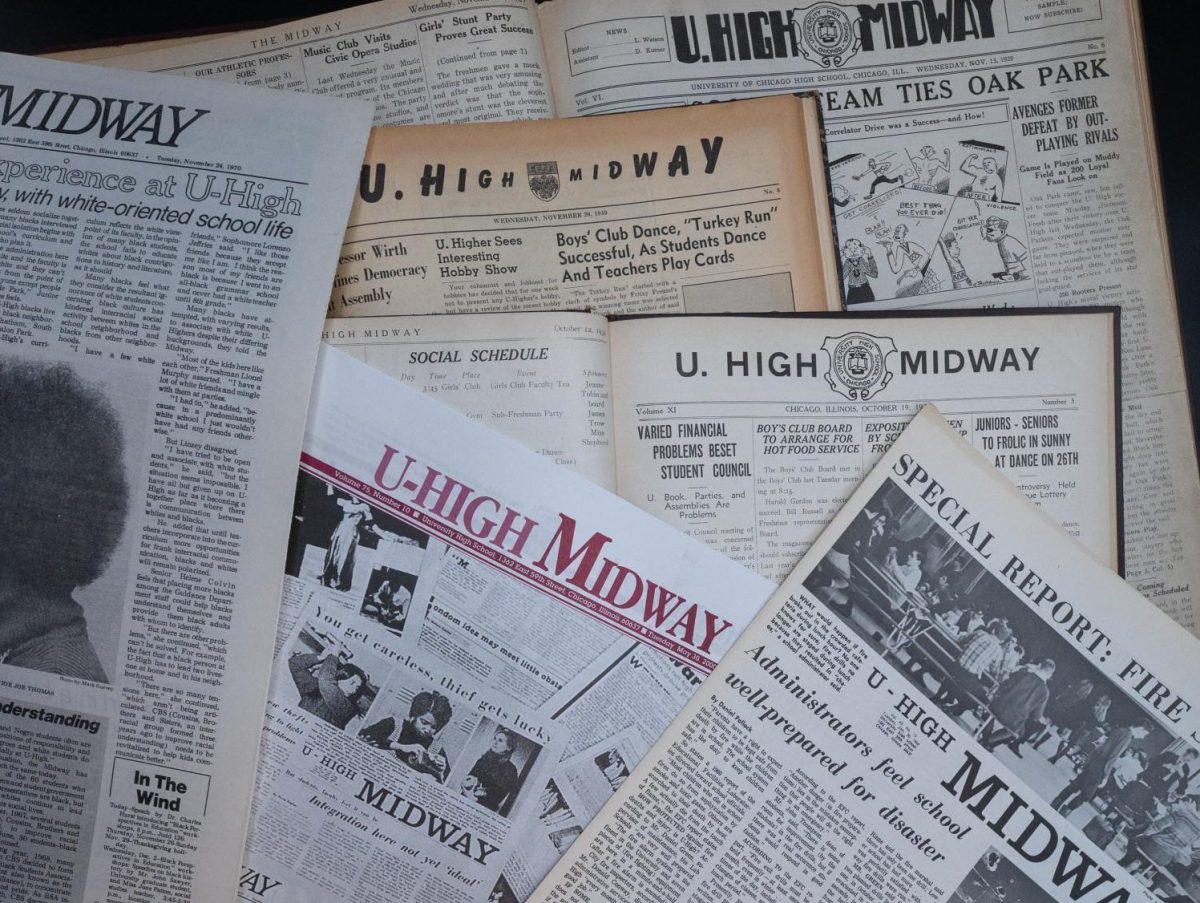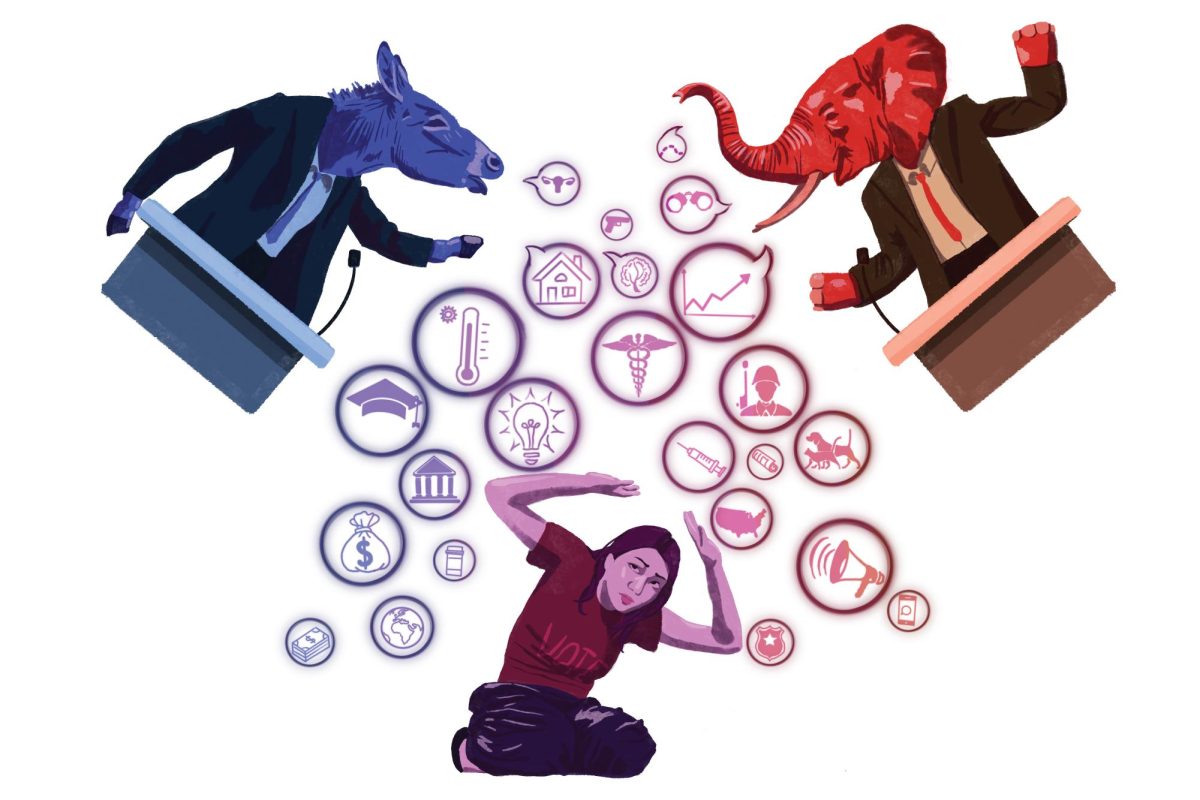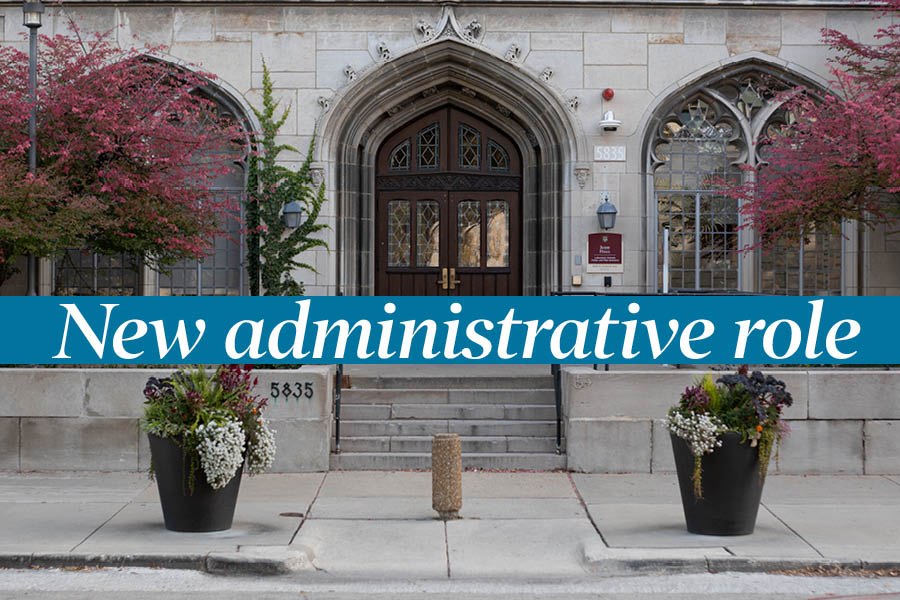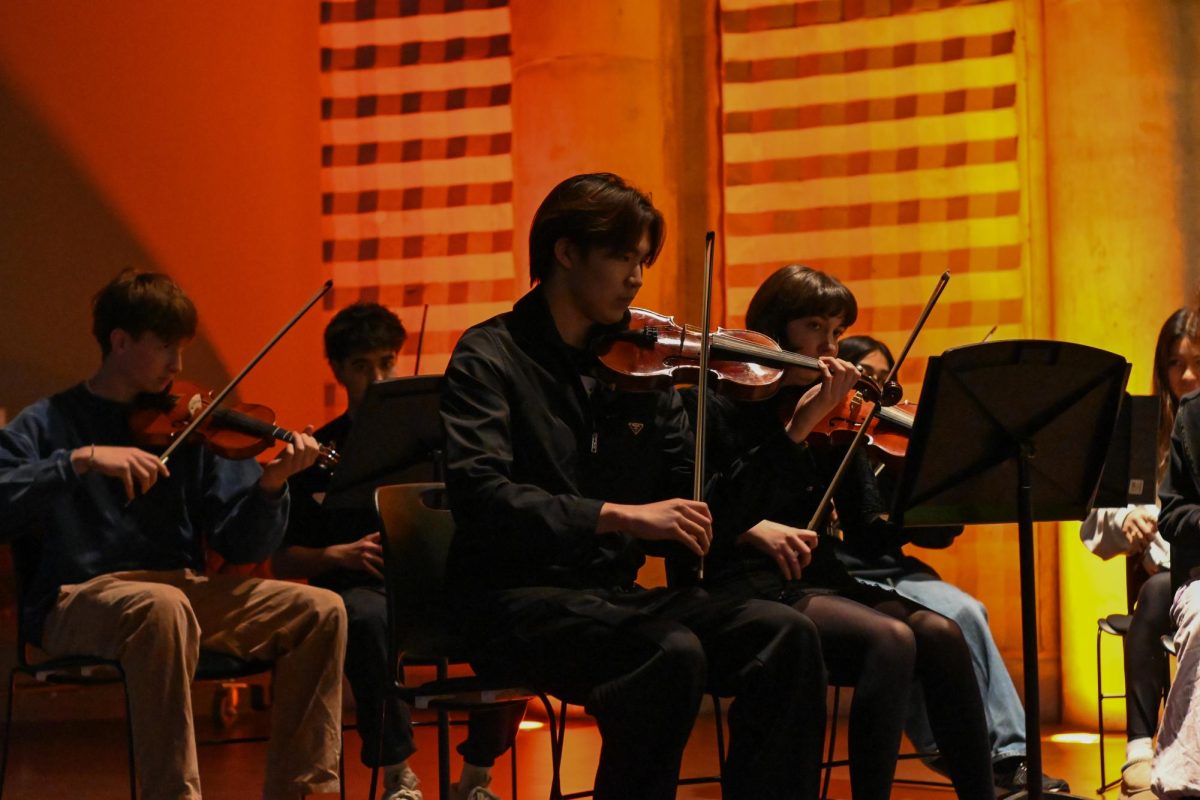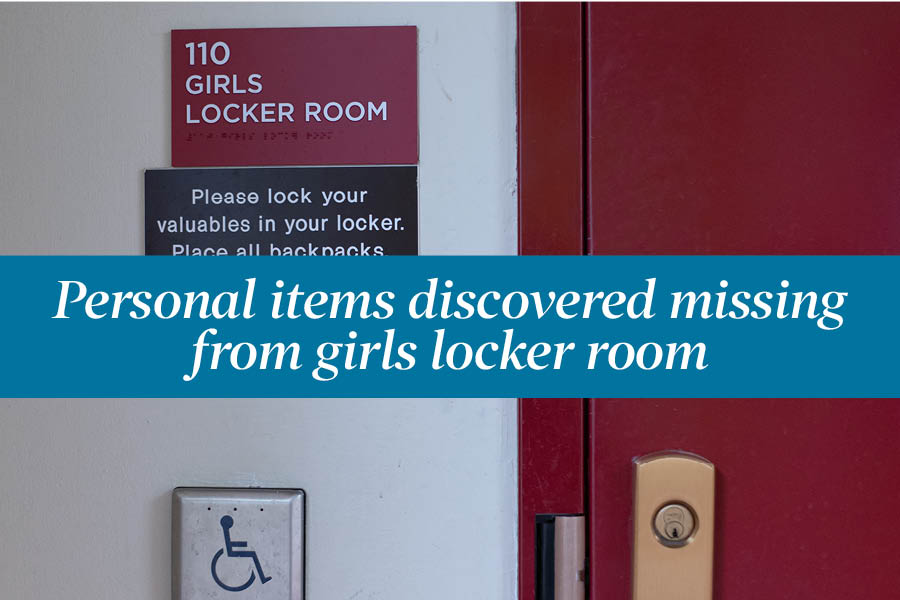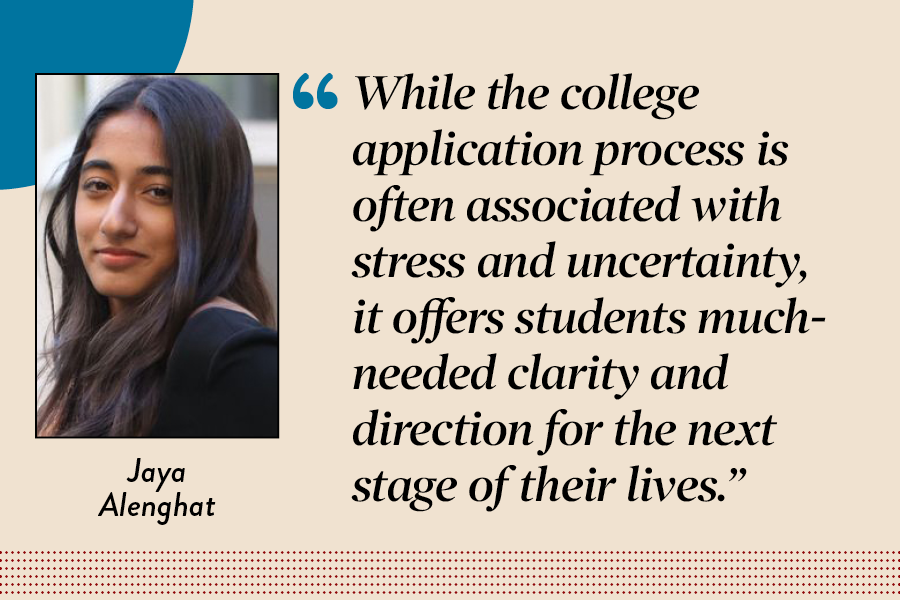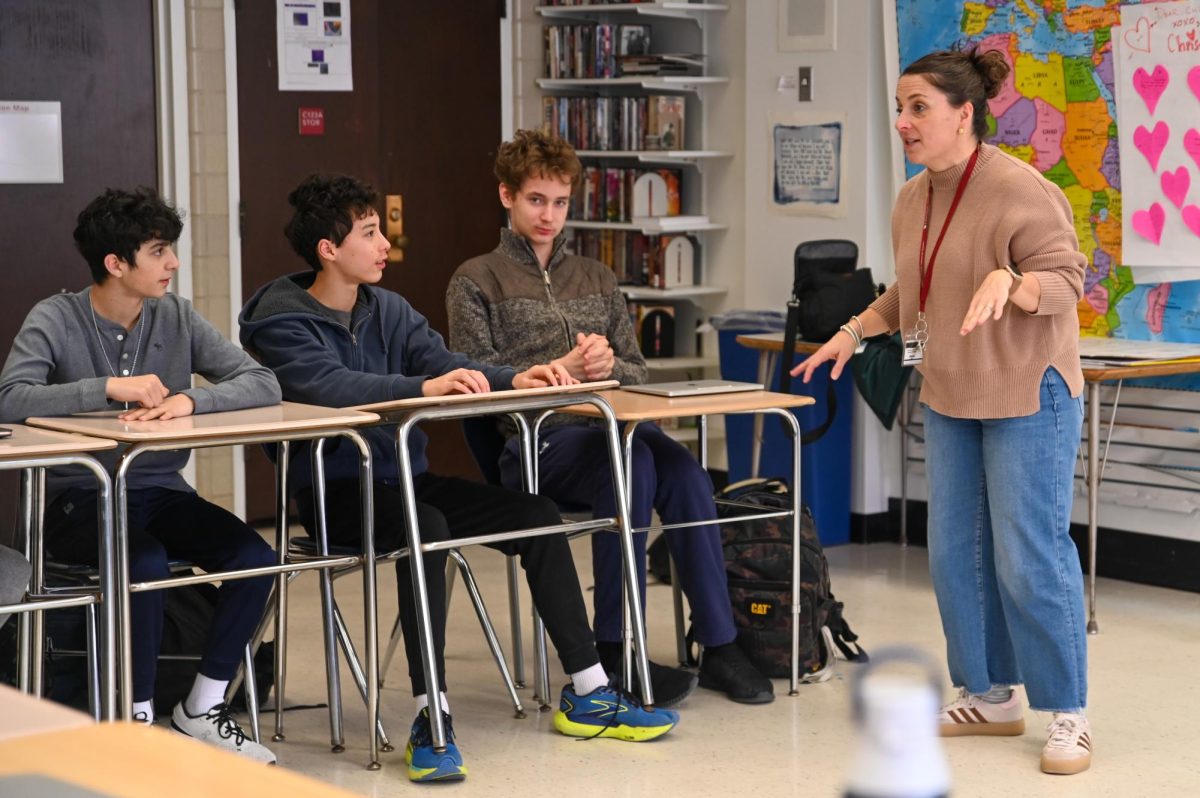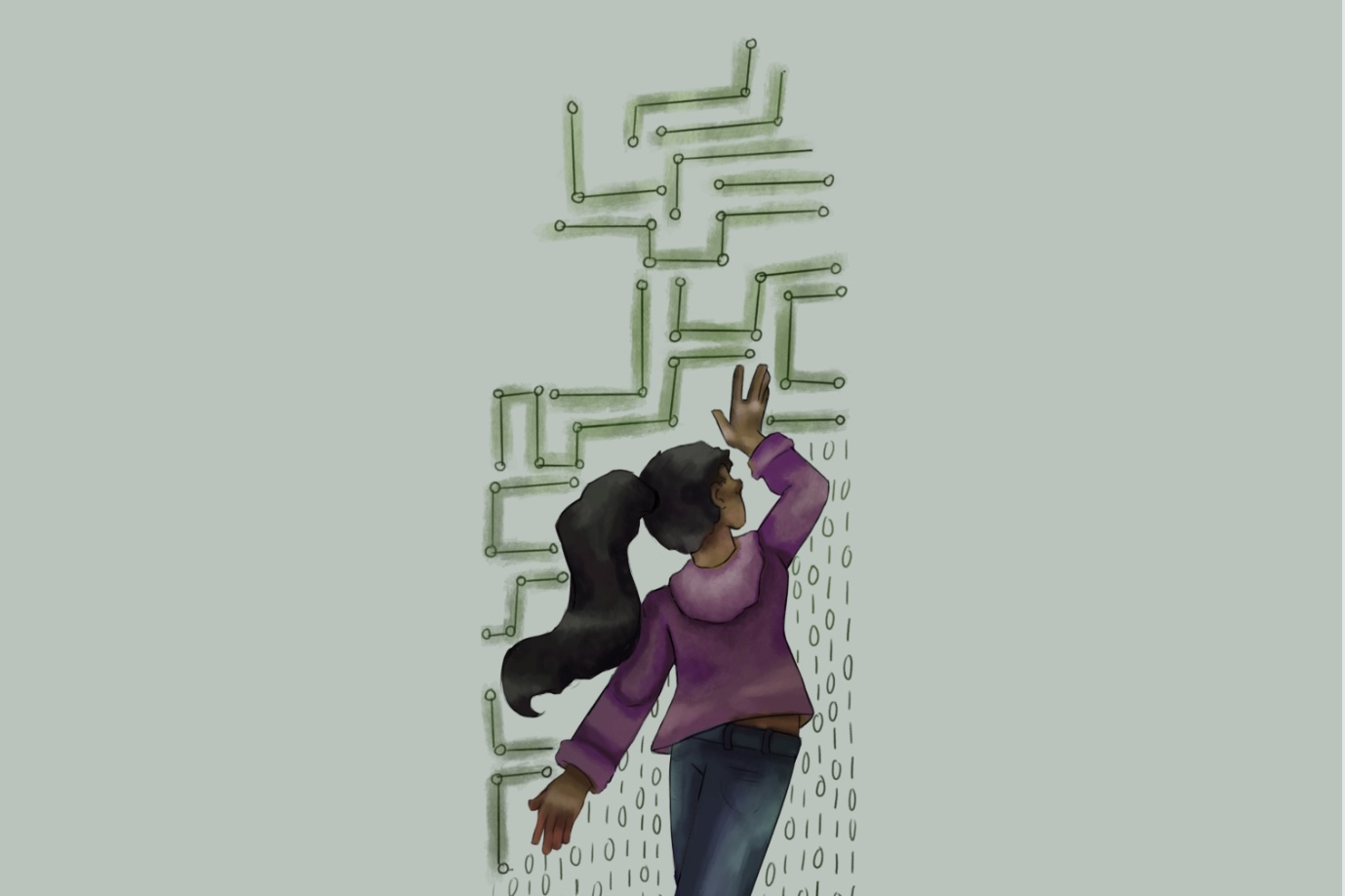
You and AI: Your new reality
Students use the varied capacities of AI systems to complete personal tasks, solve problems
This in-depth package was edited by Katie Sasamoto-Kurisu
Previously, when senior Asher Grossman wrote code for non-school-related projects, large amounts of his time were taken up with work he found simple but tedious. Now, the development of generative artificial intelligence, similar to Chat GPT, has granted Asher with new efficiency outside the classroom.
“It can’t write everything for me,” Asher said. “I still need to think about it and go through it, but it can help with a lot of the aspects of code that I just have to write but is annoying to write or tedious or simple.”
Despite the many precautions educators are taking to restrict the use of generative AI in school, students are discovering new ways this technology can enhance their lives both in and out of school.
Sanjog Misra, the faculty co-director of the Center for Applied Artificial Intelligence at the University of Chicago Booth School of Business, said he is opposed to AI restrictions because of its capability to advance the way people learn.
“What changes with generative AI-type tools is that each person can kind of personalize their experience,” Dr. Misra said. “So I think that’s going to be key, and it’s going to accelerate the speed at which we learn, and it’s going to broaden the set of things we learn.”
With the use of AI, students have access to an easier way to learn subjects, like languages, in their free time. Instead of classes banning ChatGPT, Dr. Misra believes teachers — including himself — should change the way they teach.
“There’s always some resistance because different people adopt new technologies at different rates,” Mr. Misra said, “so that’s true for teachers as well, but I think you have to change the way you think about assignments, you have to change the way you design curriculum or even think about topics that you should cover or shouldn’t cover. All of those will change.”
Asher has found ChatGPT to be helpful as a starting point, likening the chatbot to Wikipedia in that it can provide a lot of information. However, responses generated by ChatGPT have been known to include misinformation.
“I think the aspect of explaining stuff simply, especially in an environment where you’re learning, that’s just something that can be applied,” Asher said. “If there’s, like, a topic you’re having trouble understanding in class, in addition to all the other options — go to peers, go to teachers — one of the things you can do is ask Chat GPT, ‘Hey, explain this topic simply.’ And that’s not the end of learning obviously, Chat GPT can be incorrect, but that can be a really good starting point.”
When using ChatGPT, Dr. Misra warns students to not blindly trust the technology and instead verify all information the technology provides them.
“Think of Chat GPT as having a friend who’s a know-it-all,” Mr. Misra said. “If you ask that friend a question, 80, 90 percent of the time there going to give you a reliable answer, but once in a while they’ll say crazy stuff. So you know enough not to blindly trust that friend.”
However, generative AI is not solely a tool for learning. The efficiency of the technology allows students to have an easier time completing simple tasks like writing emails.
Senior Max Mathias said, “I think that using ChatGPT to write emails is probably gonna give a worse email that one you’d write but, I mean, if it gets the point across, isn’t that the point of an email?”
As AI continues to evolve, Dr. Misra hopes students are further educated on the many benefits of artificial intelligence.
“I think there should be a little more thinking about how AI can be used for teaching but also for things like art,” Dr. Misra said. “There’s so many different places this can be embedded in, and so there’s this general purpose tool that can be used everywhere.”
In November 2022, ChatGPT took the world by storm. A generative AI software designed to refine writing and answer questions, ChatGPT was immediately put to the test with never-seen-before features, prompting students across the country to try to figure out how to use it to do their work. A March survey published by bestcolleges.com found that out of 1,000 college students nationwide, 43% have used an AI application like ChatGPT for school work.
While many educators and employers have viewed the use of generative AI as a shortcut to bypass the learning process, some are attempting to look at it from a more positive lens.
As institutions worldwide are testing the limits of AI software, it’s beginning to find a place at Lab.
A new AI Committee has been created, with faculty from the art and computer science departments and staff from information services. Eric Rizzi, a computer science teacher who teaches Machine Learning and Artificial Intelligence, has been working to integrate the software in his classes. He encourages his students to use generative AI software if they have questions but not to rely on it.
“I think that it’s really good at computer science. Other ones, like in terms of creative writing class, it depends on how it’s used,” Mr. Rizzi said. “To me, especially for high school students, it’s all about making sure that they understand the fundamentals and don’t take away from education by relying on this thing that gives them the answers.”
Nana Abena Gyang-Akoto, a junior in the Web App Frameworks computer science course, has been using generative AI with her class to find pre-written code rather than starting from scratch. She feels AI can be handled more proactively, listing examples of how it could be used in libraries to help store information more efficiently, or in computer science-based fields for research assistance, but it may not fit well in English classrooms.
“I feel like AI is useful if maybe you’re not being graded on, like, your cognition or being able to produce ideas yourself,” she said. “But if it’s used as, like, a research source, and it’s gonna help improve your paper to see things that you haven’t seen before, I feel like it improves the content.”
She feels it doesn’t have a place in all academic disciplines, sharing this concern with teachers of humanities. English teacher Ian Taylor often sees his students using writing assistance applications like Grammarly.com on their schoolwork, which prompts him to use turnitin.com to scan his students’ work for plagiarism. Despite their benefits, he still feels those programs and other generative AI take away from the creative thinking process.
“I think what most students are doing is using AI instead of their mind. All of these things can be helpful if it helps students to think better, but if students are substituting AI for thinking, then no AI is good,” Mr. Taylor said. “All of that process work we do toward the paper, is to, you know, force kids to think through things so that they’re creating ideas, they’re supporting those ideas and they’re connecting those ideas.”
He cautions educators to consider the implications of generative AI and how they can use it more effectively rather than allowing their students to use it freely.
“It does make things a lot easier. It’s not improving my thinking to have a computer system check to see if [a paper is] plagiarized,” he said. “I think each and every program or application really needs to be assessed to see, like, where is this cutting off the mind, and where is this encouraging kids to think and learn.”
reactive machines are the oldest forms of AI systems, with limited capability and do not have memory-based functionality and can only be used for automatically responding to a set of limited inputs
limited memory has the capabilities of reactive
machines but can also learn from historical data to make decisions, such as chatbots, virtual assistants
and self-driving vehicles
theory of mind are the next level of AI systems
researchers are working on innovating that is able to discern emotions, beliefs and thought processes of the entities with which it interacts
self-aware is a type of AI that has evolved to be
nearly as akin as the human brain that it has developed self-awareness, which has the potential to both help and hinder human progress
general intelligence represents the ability of an AI
system to potentially replicate the multi-functional capacities of a human being, which may be able to
independently form connections
superintelligence pertains to AI currently being
developed that will become the most capable forms of intelligence ever, with faster processing abilities and
Every time we open our phones we are confronted by a plethora of online media. Up until recent years, we could be assured a human was behind all of the content we’re exposed to. The rapid development of generative artificial intelligence and its widespread availability has impacted the public sector in numerous ways. Now, users are forced to decipher how much of their news articles, social media posts and spam emails are generated by AI.
University of Chicago Professor Chentao Tan’s work includes research on human-centered machine learning and natural language processing, and he is concerned by the prevalence of misinformation and disinformation as the result of growing AI technology. Professor Tan most often sees AI used to target people who are more likely to be convinced by misinformation.
Professor Tan is exploring how AI can be used to combat current disinformation attempts, specifically by aiding humans sort through varying kinds of information and helping them consider what is actually truthful.
“In my work, I’ve been trying to think about the more positive aspects of AI. I want to help people think critically about the kind of information they are getting,” Prof. Tan said.
Citing the 2020 election and the aftermath of disinformation surrounding its outcome, Professor Tan is concerned by the ease at which AI can convince people to not believe any information they see despite significant evidence. He believes establishing a sense of truth requires both technical adoption and public acceptance.
“With the wide adoption of AI, even as it improves, it sometimes gives false information,” Prof. Tan said. “It may change how people perceive truth. There can be a large group of people who don’t believe anything no matter what evidence you show.”
While Prof. Tan doesn’t believe AI has the capability to generate large amounts of misinformation, it is most often used to aid humans in multiplying false information like campaign and social media posts.
“I’m not worried about AI actively creating misinformation on its own, but there are malicious people with agendas that will use AI to affect elections,” Prof. Tan said.
According to both Prof. Tan and Brian Hewlett, Laboratory Schools director of information systems, reading a diverse set of sources and maintaining a core base of information rooted in truth still remains one of the best practices to protect ourselves against disinformation, AI generated or not.
Mr. Hewlett is confident that reading more work written by humans will train us to spot work generated by AI. Just as AI will get better at eliminating inconsistencies, humans will get better at identifying obvious fabrication.
“Your mind is a muscle like anything else, the more that you use and have a healthy dose of what is foundational fact, and what is theory,” Mr. Hewlett said. “For the longest time people have been trying to sell you something too good to be true or snake oil. I think this is just the next iteration of that.”
The advent of generative artificial intelligence, commonly known as AI, has brought both issues and benefits to several fields of interest among U-High students.
MUSIC
As well as generating music, AI can provide artists with ideas and also create beats. As an AI-generated song that featured the fake audio tracks of artists Drake and The Weekend, “Heart on My Sleeve” by ghostwriter977 has recently gone viral as well. Based on AI’s analysis of various artists’ musics, AI can help artists find beats for their music and create remixes for certain content.
Jacob Liu, co-president, Beatmaking Club
“I feel like it’s definitely like a tool that you can use, but it’s not something that will completely substitute. Like writing, people use like Grammarly to fix their writing. It’s, like, it’s the same way for beats. You can use it to touch up on like mastering and leveling, fixing up, like, the way things sound, but right now is definitely not a good enough substitute completely for, like, actual production.”
VISUAL ART
AI can help people create digital art faster and more efficiently, such as automating the repetitive tasks required in producing the art. AI may analyze an artist’s past works to propose creative ideas, allowing artists to take a new creative path.
Isadora Glick, interested in visual arts
“I also don’t think that it’s going to replace visual art in the way that a lot of people think that it might, because I think there’s always going to be some people that appreciate the genuineness of real human-made art. And so I think that it’s going to definitely become an issue. But I don’t think that it’s going to be eradicated, like the success of the art market, I guess.”
FINANCE
Given the large amount of past financial data current AI systems hold, AI has helped individuals in the financial field make decisions, predict market trends and detect fraud. AI has also simplified basic banking activities such as executing payments, deposits and transfers.
Nash McKeague, director of outreach, Finance Club
“AI is both a good tool and something that hurts the industry. AI when used to a limited capacity and as a tool for analysis or market conditions can be beneficial. However, if over-reliant on AI, many consequences can occur, such as the AI assessing all the outcomes and incorporating all the factors, so overall I believe that AI is great when used in tandem with humans.”
WRITING
AI is not only used to correct grammatical errors throughout the writing process but also to propose new ideas for writers. While some experts believe AI limits the creative liberties of these writers, many people still find it helpful in completing certain kinds of work.
Sophomore Bayaan El-Bawab
“I think AI represents a very scary change for not just the humanities but the arts in general, especially when it comes to writing. People spend years honing a craft that already does not pay a lot, only for AI to be able to do the same in a minute. I do think, though, that people do need to accept that it’s not an entirely negative tool. Sometimes it can be useful to bounce ideas off of, but we need to be careful that it doesn’t become something that’s replacing humans.”
SCIENCE
AI is being used to analyze certain complex scientific tasks, including climate modeling and drug discoveries for the scientific community. AI repurposes some medications and helps scientists create new drugs for certain patients. Companies like Antidote, Turbine.AI, and Row Analytics are known to seek AI in their drug discovery processes. It can also help scientists generate hypotheses and test theories.
Junior Marko Nagel
“Well, I think that science is inherently a very original and, you know, creative field. And I think that AI’s inability to produce a truly original idea makes it that it can only ever be used as a very supplemental tool, and we’ll never really be able to replace it anyway.”









